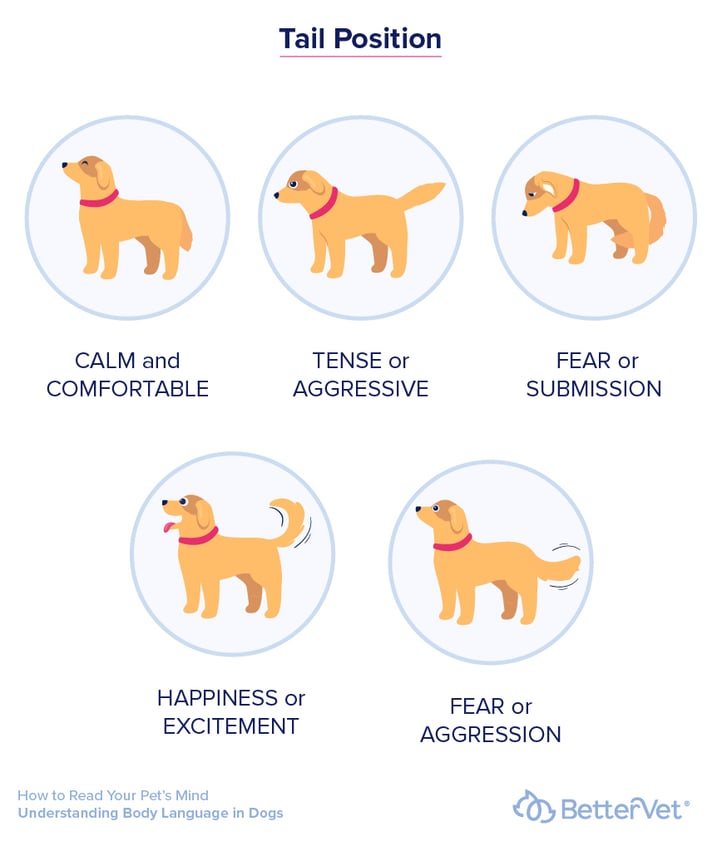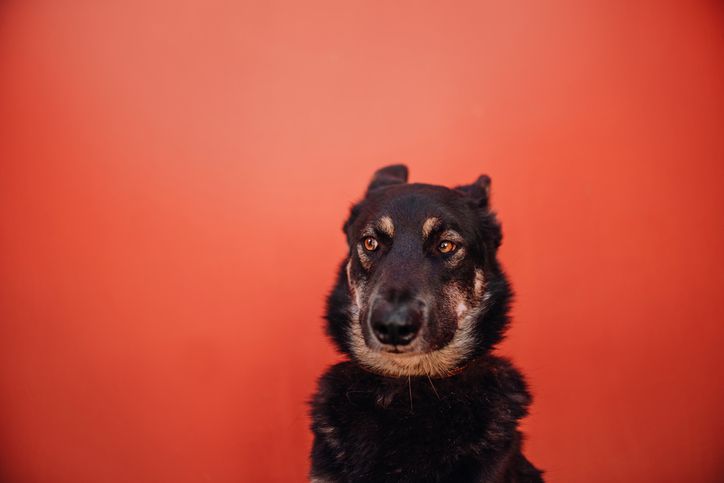Read your dog’s body language like a pro with these simple tips and observations. Dogs communicate through body movements and expressions, allowing us to understand their needs, emotions, and desires.
By recognizing key signals such as tail wagging, ear position, and facial expressions, you can better interpret what your dog is trying to convey. Gain a deeper understanding of your furry friend by observing their body language cues and responding accordingly.
This will not only strengthen your bond but also ensure the well-being and happiness of your canine companion.

Understanding Canine Communication
Discover the key to understanding canine communication and unlock your ability to read your dog’s body language like a professional. Develop a deep understanding of your furry friend’s nonverbal cues to enhance your bond and strengthen your relationship.
Dogs use sophisticated nonverbal cues to communicate their feelings and intentions. Learning to decode these body language signals is crucial for understanding your furry companion better. Recognizing and correctly interpreting your dog’s body language can strengthen your bond, prevent misunderstandings, and create a harmonious relationship. This article will explore the importance of reading dog body language and dive into standard signals and their meanings.
Importance Of Reading Dog Body Language
Understanding and responding to your dog’s body language is vital for keeping them happy and safe. Dogs primarily rely on nonverbal signals to communicate their emotions, needs, and intentions. By paying attention to these cues, you can effectively communicate with your pup and address any potential issues before they escalate.
Reading your dog’s body language can help you:
1. Prevent aggression and fear: Recognizing signs of stress or anxiety can help you calm your dog and alleviate potential triggers.
2. Ensure their comfort: Understanding your dog’s body language allows you to create a safe and secure environment, ensuring they feel at ease in their surroundings.
3. Promote positive interactions: By interpreting your dog’s signals, you can facilitate positive social interactions with other dogs and humans, reducing the chances of conflicts.
4. Identify health issues: Your dog’s body language changes can sometimes indicate underlying health problems. By being attentive to their signals, you can detect potential issues early on and seek veterinary care promptly.
Standard Signals And Their Meanings
Dogs communicate through a variety of body language signals. Here are some commonly observed cues and their meanings:
| Signal | Meaning |
|---|---|
| Tail wagging: | Typically, it indicates happiness, but the speed and height of the wag can provide more context. |
| Direct eye contact: | It can be seen as a challenge or threat in certain situations. |
| Yawning: | It may signal stress or fatigue, mainly in unfamiliar or tense situations. |
| Play bow: | Invitation to play and a sign of friendliness. |
| Lip licking: | Often indicates anxiety or nervousness. |
| Raised hackles: | It can indicate aggression, fear, or excitement. |
By familiarizing yourself with these standard signals and their meanings, you can better understand your dog’s body language and enhance communication.
Every dog is unique, and their body language may vary slightly. Observe your dog’s behavior consistently and in different contexts to understand their signals comprehensively. The more you practice and pay attention, the more adept you will become at reading your dog’s body language like a pro.

Recognizing Stress And Anxiety
Recognizing stress and anxiety in dogs is crucial for their well-being and our ability to provide them with the care they need. Dogs, like humans, experience various emotions, and understanding their body language can help us identify when they are stressed or anxious. This knowledge allows us to alleviate their discomfort and create a safe and comforting environment. This article will explore the physical signs and behaviors that indicate stress and anxiety in dogs.
Physical Signs Of Stress In Dogs
Dogs often display physical signs when they are experiencing stress. Knowing these signs can help us identify and address their emotional state effectively. Some physical indications of anxiety in dogs include:
- Raised hackles
- Pinned back ears
- Dilated pupils
- Increased panting or drooling
- Tail tucked between their legs
- Excessive shedding
- Trembling or shaking
- Restlessness or pacing
- Decreased appetite
- Exaggerated yawning
It is important to note that these signs can also be attributed to other factors. Therefore, it is essential to consider the context and look for other behavioral cues to determine if stress is the underlying cause.
Behaviors Indicating Anxiety
In addition to physical signs, dogs may exhibit various behaviors that indicate anxiety. Recognizing these behaviors allows us to intervene and provide the necessary support to help alleviate their stress. Common behaviors indicating anxiety in dogs include:
- Pacing or excessive movement
- Excessive barking or whining
- Excessive licking or chewing on their body parts
- Attempting to hide or seek shelter
- Tail-chasing or self-harming behaviors
- Loss of bladder or bowel control
- Escaping or attempting to flee
- Aggression or avoidance
- Excessive drooling or panting
- Poor sleep patterns
It is important to remember that each dog is unique, and individual responses to stress and anxiety may vary. Therefore, it is crucial to observe your dog’s behavior over time and prioritize their care and comfort.
Building A Stronger Bond With Your Dog
Understanding their body language is critical when building a solid bond with your furry friend. Dogs communicate primarily through non-verbal cues, and by learning to read their body language, you can better understand their needs, emotions, and desires. This allows for a deeper connection and a stronger bond between you and your dog.
Using Body Language To Communicate
Your dog’s body language is a powerful tool for communication. By paying attention to their facial expressions, body posture, and tail and ear positions, you can gain valuable insights into what your dog is trying to tell you. For example, a wagging tail doesn’t always mean your dog is happy. Depending on the context and other accompanying cues, it could indicate excitement, fear, or even aggression.
Table:
| Body Language Cue | Meaning |
|---|---|
| Tail held high and wagging rapidly | Excitement or happiness |
| Tail tucked between legs | Fear or anxiety |
| Fur standing on end | Aggression or arousal |
| Relaxed body posture | Contentment or relaxation |
By familiarizing yourself with these body language cues, you can communicate effectively with your dog and address their needs accordingly.
How To Respond To Your Dog’s Cues
Once you’ve decided on your dog’s body language, it’s important to respond appropriately. Pay attention to what your dog is trying to communicate and adjust your behavior accordingly. For example, if your dog is displaying signs of fear or anxiety, such as a tucked tail or flattened ears, providing reassurance and removing them from the stressful situation can help alleviate their discomfort.
Unordered List:
- Respond calmly and assertively to your dog’s cues.
- Avoid punishment or scolding, as it may worsen their anxiety or fear.
- Provide positive reinforcement when they exhibit desirable behaviors.
- Give them space when they show signs of fear or discomfort.
- Use treats, toys, or favorite activities as rewards for good behavior.
By responding appropriately to your dog’s cues, you strengthen your bond and create a safe and trusting environment for them.

Frequently Asked Questions On Read Your Dog’s Body Language Like A Pro
How Can I Tell If My Dog Is Feeling Anxious?
If your dog is displaying panting, pacing, or shaking behavior, these are signs that your dog may be feeling anxious. Other signs include drooling, yawning, or avoiding eye contact.
What Are The Signs That My Dog Is Happy?
A wagging tail, relaxed body posture, and a playful demeanor indicate that your dog is feeling happy. Other signs include a loose, open mouth, raised ears, and friendly greeting.
Why Does My Dog Lick Me?
Licking is a natural behavior for dogs and can have multiple meanings. Dogs may lick to show affection, seek attention, or explore their surroundings. It can also be a sign of submission or an attempt to appease you.
Conclusion
Understanding your dog’s body language is essential for effective communication and building a strong bond with your furry friend. You can decode their emotions and respond by paying attention to subtle cues like tail wagging, ear position, and posture.
Recognizing signs of fear, anxiety, or aggression can help you address any potential issues and ensure your pet’s well-being. So, next time you interact with your dog, observe their body language like a pro and deepen your connection with them.



